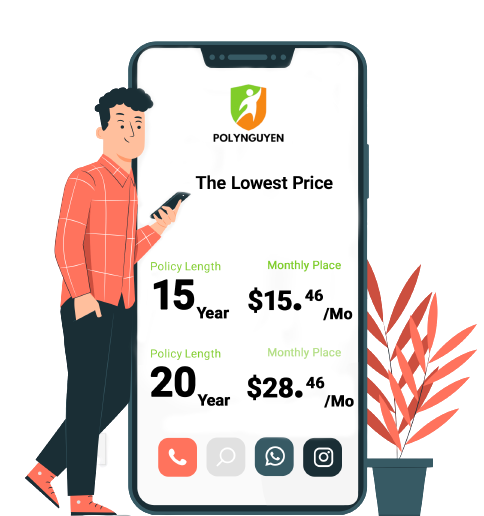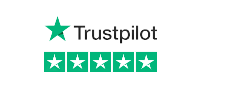Compare top home insurance quotes today
We don't sell your information to third parties.

How to shop homeowners insurance in 2022
We help you get homeowners insurance with six simple steps. When you’re ready to buy, Polynguyen can help you compare quotes from multiple top companies.
How to buy homeowners insurance in 6 easy steps
The best way to shop for homeowners insurance is to compare quotes from at least three insurance companies so that you’re not missing out on better or more affordable coverage in your area. With Polynguyen, you can compare and buy home insurance in a matter of minutes. Just answer a few brief questions about your house, and we’ll provide you with several policy options at a price point that suits your needs.
Six simple steps to getting homeowners insurance
Learn about how much coverage you need
Get familiar with home insurance policy lingo
Gather information about your home
Compare home insurance quotes
Choose your policy
Finalize your policy details
1. Learn about how much coverage you need
When you get home insurance quotes, the coverage amounts listed are often estimates — not an exact calculation of how much coverage you’ll need. To make sure you’re being quoted for the right amount of coverage, consider getting a more accurate estimate of the following:
The replacement cost of your home: The amount of insurance on your house should be equal to its replacement cost — the amount it would cost to rebuild the home from the ground up after a disaster. Insurers often provide their own replacement cost estimate using online estimation tools, but for a more precise calculation, consider hiring a professional appraiser.
The total value of your personal belongings: You’ll want enough personal property coverage to cover the value of all of your stuff, like appliances, furniture, and electronics.
The total value of all of your assets: You should have enough personal liability coverage to cover your entire net worth in case you’re sued.
Your homeowners insurance coverage needs will also depend on your home’s location and the risks (wildfires, hurricanes, tornadoes) where you live. If you live in a high-risk coastal area or region that experiences frequent wildfires, your coverage needs will be different than if you lived somewhere with a more mild climate.
2. Get familiar with home insurance policy lingo
To get an accurate quote estimate, you’ll need to give the insurer information about yourself and the type of property you’re insuring.
Here’s some of what you’ll need to provide when you shop homeowners insurance policies.
Your home’s square footage and roof type (like hip or gable)
The heating type of your home’s appliances (gas or electric)
The renovation history of your home
Whether you have any pets, trampolines, or a pool
Whether it’s your primary or second home
Whether you rent it out in the short or long term
The more details you give about your home, the more accurate your quote will be. If you’re simply swapping out policies, most of this information will be available on your old policy. Otherwise, you can find your home’s structural details by searching for your property on your county’s property appraiser website.
Flooding and earthquakes aren’t covered under standard home insurance policies
Insurance companies will only accept claims if the cause of damage or property loss is a covered peril in your policy. Examples of covered perils include fire, wind damage, theft, burst pipes, fallen trees, and more. Disasters that are not covered include flooding, earthquakes, and landslides.
3. Gather information about your home
To get an accurate quote estimate, you’ll need to give the insurer information about yourself and the type of property you’re insuring.
Here’s some of what you’ll need to provide when you shop homeowners insurance policies.
Your home’s square footage and roof type (like hip or gable)
The heating type of your home’s appliances (gas or electric)
The renovation history of your home
Whether you have any pets, trampolines, or a pool
Whether it’s your primary or second home
Whether you rent it out in the short or long term
The more details you give about your home, the more accurate your quote will be. If you’re simply swapping out policies, most of this information will be available on your old policy. Otherwise, you can find your home’s structural details by searching for your property on your county’s property appraiser website.
4. Compare home insurance quotes
The easiest way to buy homeowners insurance is through a marketplace like Polynguyen where you can compare quotes across multiple companies in your area. Once you apply, a licensed expert will reach out with policy recommendations that match your coverage needs and budget. They’ll also nail down any home insurance discounts you qualify for.
We recommend paying close attention to quotes from any insurance companies you already have a relationship with, as they often offer lower rates for existing customers. So if you already have an auto or umbrella insurance policy with a specific carrier, you may get a bundling discount for signing up for home insurance with that same insurer.
Apart from the policy itself, you’ll also want to look into the insurance company’s background. Check to see if the company insuring your house is financially stable, read reviews, and check ratings with third-party sites like AM Best, J.D. Power, and Consumer Reports.
Auto insurance is usually more expensive in states with higher numbers of uninsured drivers and more cars on the road. The amount of coverage required in your state also affects how much you pay.
5. Choose your policy
Once you’ve compared quotes, it’s time to select a policy and customize it to suit your coverage needs.
If you have a mortgage, ask your loan officer if the coverage in your policy meets the lender’s insurance requirements. Homeowners insurance doesn’t cover water damage caused by flooding, for example, so you may need to get separate flood insurance if you live in a high-risk flood zone.
There are also several optional home insurance endorsements that can be added to your policy for an additional cost.
Some of the most common endorsements are:
Water backup coverage
Appliance breakdown coverage
Service line coverage
Scheduled personal property coverage
Extended replacement cost
Guaranteed replacement cost
Flood coverage
Earthquake coverage
6. Finalize your policy details
You’ve compared quotes, gotten all your most pressing questions answered, selected a policy, and passed your home inspection. Now it’s time to finalize a few policy details.
Choose a deductible. You’ll need to set your policy’s deductible, which is the amount you’re responsible for covering on each claim before your insurance will pay out. A higher deductible means a lower premium, and a lower deductible means higher premiums.
Determine how your premiums are paid. It’s common practice for lenders to require that premiums for the year be paid in full ahead of closing on your mortgage. If insurance and property taxes are paid through an escrow account set up by your lender, this payment will likely be part of your mortgage closing costs.
Set your policy dates. Lastly, you’ll choose your policy period, which is when your home insurance starts and ends. If you’re switching homeowners insurance providers, a Polynguyen agent can cancel your old policy, set an effective date for your new one, and inform your loan officer of the switch.
Once your billing and policy details are set and your lender approves of the policy, you’re good to sign on the dotted line, pay your first premium, and activate your homeowners insurance. At this point, you’ll receive your homeowners insurance declarations page that lists out basic details about your policy and coverage amounts.
Where to shop for home insurance
When shopping for homeowners insurance, you’re going to want to compare at least three different insurance companies to make sure you’re getting the best coverage for the best price. With most major insurers, you have a few options when it comes to getting a quote.
Online through the insurance company’s website
Through the insurer’s mobile app (if they have one)
Over the phone
In person at a local office
Online through an insurance marketplace like Polynguyen
Although it may be tempting, keep in mind that you may not want to automatically go with the cheapest quote — you may also want to consider the company’s track record with customer service and paying out claims. Polynguyen has comprehensive reviews of over 25 home insurance companies, including claim satisfaction rankings from companies like J.D. Power and Consumer Reports.
Compare the best home insurance companies
It’s important to compare multiple homeowners insurance companies to ensure that you’re getting the best coverage at an affordable rate. Polynguyen agents can help you compare different insurance companies to make sure you’re getting the best policy and deal for your and your home.
Below are some of the best homeowners insurance companies rated by Polynguyen for a variety of shoppers, including those looking for affordability, first-time homebuyers, and more.
Company
Polynguyen rating
Best for
Acuity
4
Cheap rates
Allstate
3.9 out of 5 stars
Digital experience
Amica
4.2 out of 5 stars
Customer service
State Farm
4 out of 5 stars
Easy claims filing
Encompass
4.1 out of 5 stars
Bundling home and auto
Safeco
4 out of 5 stars
Extensive coverage
Hippo
4.4 out of 5 stars
Home security discounts
Travelers
3.9 out of 5 stars
Green homes
USAA
3.9 out of 5 stars
Green homes
4 mistakes to avoid when buying homeowners insurance
When shopping for homeowners insurance, here are a few common pitfalls to avoid:
Focusing on costs rather than coverage levels. Keep in mind that the cheaper your policy, the more you’ll have to pay out of pocket if you file a claim.
Not understanding what is and isn’t covered in your policy. Read through your policy to make sure you’re properly covered in the event of a wildfire, hurricane, earthquake, or flooding. Most insurance companies require additional coverage endorsements for damage caused by natural disasters.
Skimping on personal property damage coverage. Only 49% of homeowners say they have an up-to-date home inventory. [1] It’s important to log your belongings with receipts and photos. You should also make sure to include items like heating and cooling systems, appliances, home office equipment, and fine jewelry when tallying your personal property coverage limits.
Forgetting to re-shop your policy each year. Many insurers raise rates each year at your time of renewal due to inflation and changes to the value of your home. Our licensed agents at Polynguyen can help you re-shop your policy each year to make sure you’re still getting the most bang for your buck. And if you can save money by switching carriers, they’ll handle all of the paperwork for you — even if you have an escrow account.
The average cost of homeowners insurance is $1,899 per year for $300,000 in dwelling coverage, according to our analysis of 2022 home insurance rates from across the country.
Below are how different factors can raise that rate.
High-risk factor
Average annual cost
Percentage difference from national average
Aggressive dog
$1,986
4.58%
Pool
$2,002
5.42%
Poor credit
$3,645
91.94%
1 claim
$2,101
10.64%
3 claims
$2,916
53.55%
5 claims
$4,007
132.07%
75-year-old home
$1,931
1.69%
100+ -year-old home
$1,956
3.00%
20-year-old roof
$1,913
0.74%

